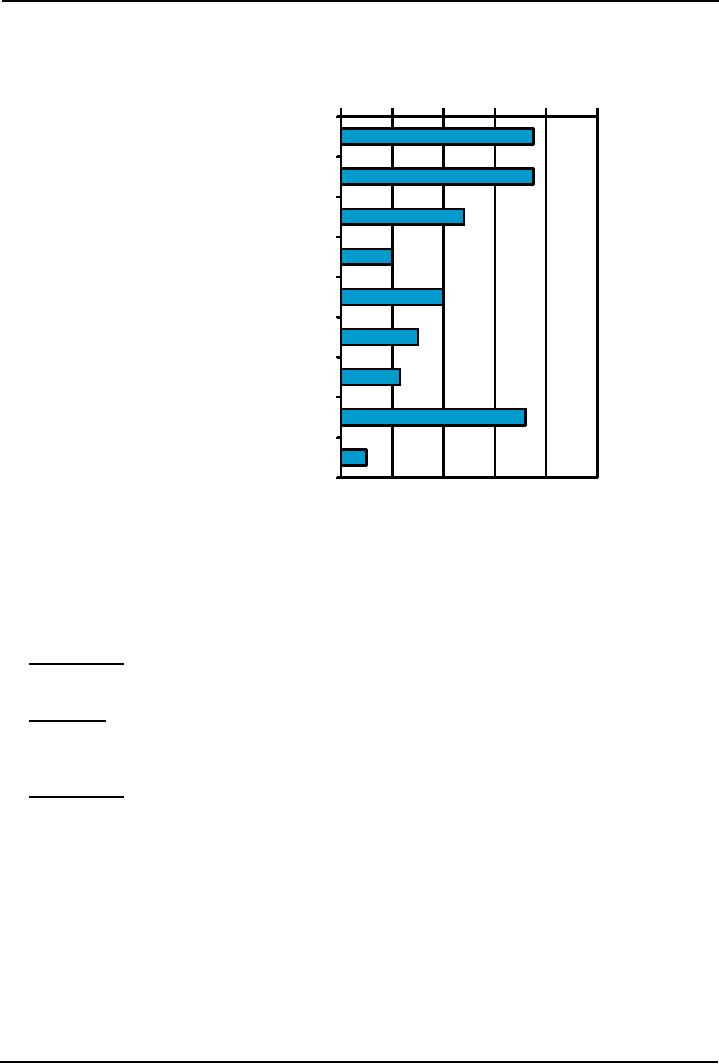 |

Social
Psychology (PSY403)
VU
Lesson
33
SOCIAL
INFLUENCE (CONTINUE......)
Aims
·
Introduce
the concept of obedience in reference to social
influence
Objectives
·
Describe
the classic studies of obedience
·
Describe
factors that influence obedience
Obedience
·
Many
social influences are hidden
and subtly employed. For
example, conformity generally
refers
to
complying with an implicit
norm.
·
Obedience
is different from other types of
influences because it is overt
and easily recognized as an
exercise
of power.
·
If
the order would cause
serious health risks, then there is a
chance for disobedience.
·
Obedience
is based on the belief that
authorities have the right to make
requests.
Crimes
of Obedience
"Crimes
of obedience" can occur when the
demands of authorities are
immoral or illegal
The
"Eichmann defense" refers to Adolph
Eichmann's claim that he was
"just following orders"
when
he
supervised the murder of 6 million Jews
in Nazi Germany
Milgram's
Experiments (1963)
·
A
study to investigate the effects of
punishment on learning of word
pairs.
·
Participant
as teacher, confederate as `learner' (of
word pairs)
·
Confederate
points out that he is 50
years old with heart
problems!
·
Experimenter
explains this is no problem and
straps him into a chair in
an adjacent room
·
Confederates
making deliberate
mistakes
·
Each
time the learner makes a mistake he is
given an electric shock, which
increases each time a
mistake
is made
·
Participant
receives a real 15 volt
shock to enhance realism (none of the
subsequent shocks are
real)
·
Confederate
(answering through an intercom)
makes deliberate
mistakes
·
At
any query from participant,
the experimenter just says
`please continue'
·
At
150 volts he demands to be
released, shouting, `Experimenter!
That's all! Get me out of
here.
My
heart's starting to bother me
now. I refuse to go
on!'
·
At
180 volts he shouts that he
can no longer stand the
pain
·
At
300 volts he refuses to give
any more answers - which the
experimenter treats as
incorrect
answers!
·
Screams
of agony at each
shock
·
At
330 - silence...
·
The
last switch - 450 volts -
labeled `XXX - danger severe
shock'
Predictions
College
students, middle class adults and
psychiatrists all predicted that
participants would refuse
to
continue
well before the 450 volt
limit.
134

Social
Psychology (PSY403)
VU
·
Psychiatrists
predicted that 0.1%
participants would obey the
experimenter completely, while
65%
of
participants (24 out of 40)
obeyed up to the maximum 450
volts.
·
All
obeyed up to 300 volts - where the
psychiatrists predicted 96%
refusal
·
And
these were `normal' people
with no personality disorders who
all experienced intense stress
during
the experiment. Some people
explained this by interpreting
that the participants were
inadvertently
recruited sadists. However,
they were observed sweating, trembling,
stuttering, biting
their
lips, and groaning, as they
struggled through the experimental
procedure.
Table
1: Shock level and
percentage of obedience
Inflicting
psychological harm
Shock
Level (mv)
%
obeying
on
victims
Because
the findings
were
0-240
(slight
to very strong)
100
unexpected,
Milgram carried
out
a number of experiments to
255-300
(intense)
88
better
understand the conditions
under
which obedience or
315-360
(extreme intensity)
68
otherwise
would be most likely.
The
results showed same
level
375-420
(Danger: severe shock)
65
of
obedience with men and
women,
and college student
435-450
("XXX")
65
participants.
World-over
findings of obedience
level:
·
Australia=
68% (Kilham & Mann,
1974)
·
Jordan=
63% (Shanab & Yahya,
1977)
·
Germany=
85% (Mantell, 1971)
·
Other
experiments by Milgram (in run-down
office building than in Yale
or with ordinary
experimenter
rather than a professor/ scientist, 1965)=
48% and 20%
respectively
A
series of studies by Meeus
and Raaijmakers
(1995):
Students
sometimes note that the
Milgram studies are now
quite outdated, and wonder
whether in these
modern
times the level of obedience would be as
high. A series of studies by
Dutch psychologists
Meeus
and Raaijmakers (1995) is relevant in
this reference. Meeus and Raaijmakers
used a procedure
in
which the real subjects were
asked to serve as the
experimenter's assistant in a study of
people's
ability
to work under stress. They
were told that they would
help to interview a job candidate,
actually
a
confederate of the experimenter, who was
taking a test as part of the
interview. The test
was
described
as crucial to the job: if the job
candidate passed, they would get the
job. However, the
ability
to withstand stress was described
not as crucial to the job
but as part of the
researcher's
academic
project. The subject's role
was to make 15 negative
remarks ("stress remarks")
that would
place
the job applicant under
strain. A series of four prods
was given to the subject if they refused
to
carry
on; the experiment was
discontinued after refusal of
all four. A control group
was not prodded
and
could stop making the stress
remarks at any point in the procedure. In
the replication intended to
most
closely parallel the original
Milgram experiment, 91% of the
participants obeyed the
experimenter
until
the end and made all the stress
remarks. None of the control
subjects went all the way to
the end.
A
group of subjects given a
written description of the procedure expected
that 9% would complete
the
procedure.
This
level of obedience is even higher than
that achieved in the Milgram study.
Meeus and
Raaijmakers
describe their obedience as "mediated
violence" in that the participants
would only
"indirectly
observe the negative consequences to the
victim" in comparison to the more
physical
violence
of the Milgram experiment, and expected
thus higher level of obedience. In
all, they
completed
19 studies, many of which
paralleled the Milgram variations, and
consistently reported
levels
of obedience that were higher than
those found by Milgram. The
highest level of obedience
(100%)
was found in a condition
that the experimenters had anticipated
would decrease
obedience:
135

Social
Psychology (PSY403)
VU
participants
were provided with information
about the experimental procedures
well in advance. In
this
condition,
participants were significantly more
critical of the experiment than in
other conditions, but
their
level of obedience was as high.
Other variations (ones that
substantially decreased the
level of
obedience)
focused on the subject's legal liability
for the consequences. In these
conditions, obedience
was
much lower (30%, and down to
20% when combined with
advance information), but
was not
eliminated.
Finally,
in two variations, the Milgram
experiment was replicated
exactly, with the addition of
advance
information
indicating that the participant
would administer either
"painful shocks" or "deadly
shocks."
Obedience
in these two conditions was
57% and 43% respectively, a
significant decrease
from
Milgram's
65%, but still substantial.
Other replications of the Milgram
experiment have been
summarized
by Smith and Bond (1994).
Their summary of a dozen
studies performed from the
1960s
to
the late 1980s suggested
that obedience is still quite
high --and contrary to student
expectations,
experiments
performed with students as
participants showed more
rather
than less obedience than
those
performed
with the general population. Some
cultures (Germany and Austria) show
significantly
greater
obedience than the U.S. (85%) and
some, notably Australia and, to a
lesser extent, the
United
Kingdom,
show less. Taken together,
these studies suggest that,
today when technology allows
us
violence
that is more "mediated" and distant
than ever before, we might
expect greater, not lesser
levels
of
obedience in deadly situations. It is expected
that in Pakistan the obedience level
shall be quite high
considering
the fact that obedience of authority is
very much appreciated and expected
here.
Variations
in conditions affecting
obedience
Variations
increasing obedience
·
Watching
a peer give shocks
·
Two
other teachers
continue
Variations
decreasing obedience
·
Increasing
distance of experimenter
·
Two
other teachers quit
Observing
others defy authority greatly
reduces obedience
Milgrm's
Experiments present a very
bleak picture of mankind's
ability to resist destructive
orders
from
authority. Perhaps Milgram's experiments
had special circumstances. The
researchers asked
that
what
happens if antisocial orders
are delivered to an entire
group?
·
William
Gamson et al. (1982) asked 9
participants to indulge in a discussion
videotaped by an oil
company
·
A
previous manager had sued the
company, for being fired on
living with a women
without
marriage
·
A
confederate either taking a more or less
active role in mobilizing
rebellion against the oil
company's
actions
·
Coordinator
asked all (in steps)
participants to act as if they were
offended on manager's immoral
act
·
Then
coordinator asked them to sign an
affidavit for court
hearing
·
Without
the help of confederate, participants
began to rebel. Some said
that they will confiscate
the
camera
and present in court, and because of
that experiment had to be
terminated.
The
conditions affecting obedience are
illustrated in the graph
given below:
136

Social
Psychology (PSY403)
VU
Figure
1:
Percentage
of participants who fully
obeyed
0
20
40 60 80 100
Baseline
- males
Baseline
- females
Run-down
office building
Ordinary
person as experimenter
Participant
and victim in same
room
Participant
required to touch
victim
Experimenter
gives orders by phone
Participant
with fully obedient
confederates
Participant
with openly
rebellious
confederates
Compliance
Factors
fostering compliance
Compliance:
Publicly acting in accord
with a direct request. As
compliance involves a direct
route, it
generally
induces more thinking and critical
analysis than conformity. What
strategies you can
employ
to
increase the likelihood that
others will grant your
request? Following are the
conditions associated
with
good compliance:
Positive
mood
People
in good mood are more
active; less critical;
pleasant mood activates pleasant
thoughts
Reciprocity
The
expectation that one should
return a favor or a good deed;
first do them favor, then
other will be
obligated
to return
Giving
reason
Langer
et al. (1978) found evidence
for the power of reason; A
"placebo reason" ("Can I use the
copier
now
because
I have to make copies?")
increases compliance over no
reason, and almost as much as
a
real
reason ("because
I'm in a rush"). Without
giving reasons, compliance
was 6% as compared to
when
request was made with
providing reason. It worked
because people have habitual
desire to
explain
others' behavior and use of
heuristic
Two-step
Compliance strategies
·
Foot-in-the-Door
Technique. Meta-
analysis by Cialdin & Trost (1998))
shows its effectiveness
o
First
make a small request, then a
large one.
·
Door-in-the-Face
Technique;
usually adopted by charities and
organizations.
o
First
make an unreasonably large request,
then a smaller one.
137

Social
Psychology (PSY403)
VU
·
Low-Ball
Technique (Cialdini et
al., 1978)
o
First
make a reasonable request; then
reveal further costs
·
That's-Not-All
Technique; don't
give the opportunity to reject:
buy one get one free
o
First
make a large request, then
offer a bonus or
discount
Social
impact theory (Latane,
1981):
A
theory that attempts to
unify and explain the findings
from conformity and obedience
research:
·
Physical
presence of the authority figure is
important
·
Social
impact theory can explain
the `leveling off' effect in
Asch's (1956) conformity
study - each
successive
individual adds less and
less to the overall effect (one
light bulb has more of an
effect
than
the second, but adding the
15th bulb to 14 already lit
would not make any
noticeable
difference).
Latane states it is because
the individual impact
decreases with so many
people.
·
Social
support means any effect of an
influencing group is
diffused.
·
Persuasion:
expertise and credibility of the authority
are important. In Milgram's
experiment,
researcher/
scientist was obeyed more.
·
The
amount of social influence that
others have depends
on:
o
Number
- the number of people in the group
exerting power
o
Strength
- status, power, expertise
o
Immediacy
- how close the group
exerting power is in time
and space
Reading
·
Franzoi,
S. (2003). Social
Psychology. Boston:
McGraw-Hill. Chapter 9.
Other
Readings
·
Lord,
C.G. (1997). Social
Psychology. Orlando:
Harcourt Brace and Company. Chapter
8.
·
David
G. Myers, D. G. (2002). Social
Psychology (7th ed.).
New York:
McGraw-Hill.
138
Table of Contents:
- INTRODUCTION TO SOCIAL PSYCHOLOGY:Readings, Main Elements of Definitions
- INTRODUCTION TO SOCIAL PSYCHOLOGY:Social Psychology and Sociology
- CONDUCTING RESEARCH IN SOCIAL PSYCHOLOGY:Scientific Method
- CONDUCTING RESEARCH IN SOCIAL PSYCHOLOGY:Evaluate Ethics
- CONDUCTING RESEARCH IN SOCIAL PSYCHOLOGY RESEARCH PROCESS, DESIGNS AND METHODS (CONTINUED)
- CONDUCTING RESEARCH IN SOCIAL PSYCHOLOGY OBSERVATIONAL METHOD
- CONDUCTING RESEARCH IN SOCIAL PSYCHOLOGY CORRELATIONAL METHOD:
- CONDUCTING RESEARCH IN SOCIAL PSYCHOLOGY EXPERIMENTAL METHOD
- THE SELF:Meta Analysis, THE INTERNET, BRAIN-IMAGING TECHNIQUES
- THE SELF (CONTINUED):Development of Self awareness, SELF REGULATION
- THE SELF (CONTINUE…….):Journal Activity, POSSIBLE HISTORICAL EFFECTS
- THE SELF (CONTINUE……….):SELF-SCHEMAS, SELF-COMPLEXITY
- PERSON PERCEPTION:Impression Formation, Facial Expressions
- PERSON PERCEPTION (CONTINUE…..):GENDER SOCIALIZATION, Integrating Impressions
- PERSON PERCEPTION: WHEN PERSON PERCEPTION IS MOST CHALLENGING
- ATTRIBUTION:The locus of causality, Stability & Controllability
- ATTRIBUTION ERRORS:Biases in Attribution, Cultural differences
- SOCIAL COGNITION:We are categorizing creatures, Developing Schemas
- SOCIAL COGNITION (CONTINUE…….):Counterfactual Thinking, Confirmation bias
- ATTITUDES:Affective component, Behavioral component, Cognitive component
- ATTITUDE FORMATION:Classical conditioning, Subliminal conditioning
- ATTITUDE AND BEHAVIOR:Theory of planned behavior, Attitude strength
- ATTITUDE CHANGE:Factors affecting dissonance, Likeability
- ATTITUDE CHANGE (CONTINUE……….):Attitudinal Inoculation, Audience Variables
- PREJUDICE AND DISCRIMINATION:Activity on Cognitive Dissonance, Categorization
- PREJUDICE AND DISCRIMINATION (CONTINUE……….):Religion, Stereotype threat
- REDUCING PREJUDICE AND DISCRIMINATION:The contact hypothesis
- INTERPERSONAL ATTRACTION:Reasons for affiliation, Theory of Social exchange
- INTERPERSONAL ATTRACTION (CONTINUE……..):Physical attractiveness
- INTIMATE RELATIONSHIPS:Applied Social Psychology Lab
- SOCIAL INFLUENCE:Attachment styles & Friendship, SOCIAL INTERACTIONS
- SOCIAL INFLUENCE (CONTINE………):Normative influence, Informational influence
- SOCIAL INFLUENCE (CONTINUE……):Crimes of Obedience, Predictions
- AGGRESSION:Identifying Aggression, Instrumental aggression
- AGGRESSION (CONTINUE……):The Cognitive-Neo-associationist Model
- REDUCING AGGRESSION:Punishment, Incompatible response strategy
- PROSOCIAL BEHAVIOR:Types of Helping, Reciprocal helping, Norm of responsibility
- PROSOCIAL BEHAVIOR (CONTINUE………):Bystander Intervention, Diffusion of responsibility
- GROUP BEHAVIOR:Applied Social Psychology Lab, Basic Features of Groups
- GROUP BEHAVIOR (CONTINUE…………):Social Loafing, Deindividuation
- up Decision GROUP BEHAVIOR (CONTINUE……….):GroProcess, Group Polarization
- INTERPERSONAL POWER: LEADERSHIP, The Situational Perspective, Information power
- SOCIAL PSYCHOLOGY APPLIED: SOCIAL PSYCHOLOGY IN COURT
- SOCIAL PSYCHOLOGY APPLIED: SOCIAL PSYCHOLOGY IN CLINIC
- FINAL REVIEW:Social Psychology and related fields, History, Social cognition